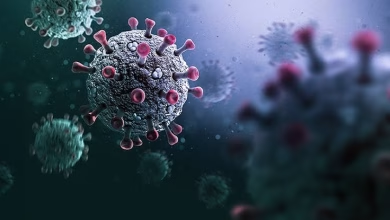
How Chewing Gum Contributes to Plastic Ingestion and Pollution
Based on data collected from several experiments, a group of researchers has noted that chewing gum is hazardous to human health, as it can release hundreds of tiny plastic particles directly into the mouth. This has drawn their attention to the high rate of plastic consumption and its environmental impact.
The study, presented at an American Chemical Society meeting in San Diego, reveals yet another way microplastics—already present in the air, water, and even human tissue—can enter the human body.
“I’m not trying to scare anyone,” said Sanjay Mohanty, the lead researcher from UCLA, in an interview with AFP. However, he noted that while there’s no concrete proof that microplastics harm human health, their widespread presence is troubling.
For the study, Lisa Lowe, a UCLA PhD student, chewed seven pieces from each of 10 different gum brands. Tests on her saliva showed that each gram of gum released roughly 100 microplastic particles on average, though some brands shed more than 600. Since a typical stick of gum weighs about 1.5 grams, the researchers estimate that someone chewing around 180 pieces a year could ingest close to 30,000 microplastic particles.
Rivers State Governor Fubara Calls Meeting with Assembly Speaker Amid Political Tensions
Although that’s significantly lower than the amount consumed through other sources—like bottled water, which contains around 240,000 microplastics per liter—the study highlights a previously overlooked source of exposure.
The research examined both synthetic gum, which is made with petroleum-based polymers, and natural gum, which uses plant-based materials like tree sap.
“We were surprised to find microplastics in both types,” Lowe said, adding that most of the plastic is released within the first eight minutes of chewing.
8Base Ransomware Leak Site Taken Down in International Law Enforcement Operation
Despite the plastic content, gum packaging doesn’t list polymers as ingredients, instead using vague terms like “gum-based.”
“They don’t tell you what’s actually in it,” Mohanty said.
David Jones, a researcher from the University of Portsmouth who wasn’t involved in the study, believes manufacturers should be more transparent.
“People are often shocked when they find out that the materials used in chewing gum are similar to what’s found in car tires, plastic bags, and bottles,” Jones said.
Lowe also pointed to the environmental impact, explaining that discarded gum contributes to plastic pollution on streets and sidewalks.
The study has been submitted for peer review but hasn’t been published yet. Wrigley, the world’s largest gum manufacturer, declined to comment when contacted by AFP.








